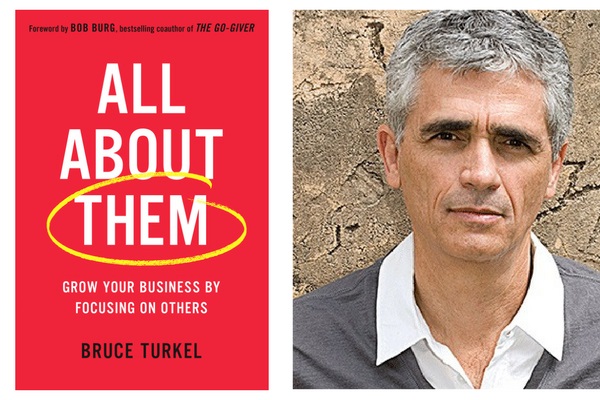
Author Bruce Turkel, in both his new book "All About Them" and during the last 33-years running his Miami-based marketing firm, Turkel Brands, helps companies move from “company-centric” marketing to “customer-centric” communication. Turkel strongly believes that companies which understand, and best connect with, the emotional needs of customers will gain a huge competitive advantage. He recently spoke with the NCMM about his ideas.
How does “All About Them” apply to middle market companies in particular?
Messaging, and the way in which messages resonate with customers, has little to do with the size of a business. What customers want to hear is that their needs are going to be met, and that’s more important to them than the size of the company.
That said, when you’re a middle market company, you’re probably much more focused on who you are and who you serve, as well as why you matter to your customers. The heightened focus of middle market companies helps their messaging. As companies get bigger, it becomes challenging to have a single message. For example, GE is no longer just an industrial company. It’s a finance company, an aerospace company, an appliance company, and a digital company.
How has technology transformed the way companies and customers connect with each other?
Emerging technologies are democratizing communication. It’s not like it used to be, where advertising and marketing was one (the company) speaking to many (its customers). In years past, it was “hey, I’m a big company and have a huge budget in order to advertise the most to the many.” And those “many” couldn’t talk back or interact with the company. That’s no longer the reality.
Companies now send messaging through multiple channels, and people can send messages right back. There’s a famous example of a United Airlines customer whose guitar was broken while he flew with the carrier. After he complained and got an inadequate response from United, he wrote a song about his broken guitar and made a video that got about 16 million views on YouTube. As a result, United decided to change the way it handled complaints about damaged luggage. Twenty years ago, you’d have written an angry letter and gotten a form letter back, end of story. Not today.
You say that customers don’t choose products for their function. Then why do customers choose products?
The function of the product has become “cost of entry” today. Everything nowadays works. What matters now is the ability of customers to tell the world who they are based upon what they buy. If you are what you eat, you are also what you buy.
A company needs to demonstrate that it understands its customers and what matters to them, and then create products and experiences that enhance customers’ lives. I always say that a good brand makes people feel good, but a great brand makes people feel good about themselves. It’s the same whether you’re in a B2C or B2B situation. Function remains cost of entry. Every B2B buyer answers to someone else inside their organization, so you need to make them look good and feel good.
How can a middle market company find its authentic brand (or company) voice?
A brand is what people think about you when you’re not around, what they say about you after you’ve left the room. Your brand is already there, already exists in plain sight. It’s your history, it’s your customer’s experience with you, it’s what you tell your employees, it’s the way your employees feel about what they do. It takes some self-reflection and work to uncover it. But it’s like what the Good Witch says to Dorothy at the end of “The Wizard of Oz”: “you had it in you all the time.”
In general, how can middle market companies better engage their customers?
When we talk about winning “hearts and minds,” it’s not accidental that hearts come before minds. It’s critical to make the emotional connection with customers before the intellectual one. Many B2B businesses tell their customers: “we have this many locations, this many trucks, we’ve been in business for a thousand years, our prices are lower.” Customers don’t care. But if you make an emotional connection first, if you show customers you know who they are and what matters most to them, and that you want to help solve their problems, then they’ll let you prove it to them with facts. Emotion opens that door.
How can middle market companies use storytelling to make emotional connections with customers?
It’s simple, but not easy. Companies need to have a “story of why.” Why do we exist, why do we do what we do, and why do we matter? This is what customers embrace. I call it “storyselling,” not storytelling. Apple has a great story. Starbucks has a great story. Stories are great ways to create evangelists inside a company, and then outside it too.
Author Joseph Campbell said there are only six or seven basic stories. All cultures across the world use the same stories. Movies use them; religions use them; and so do businesses. I explain in the book exactly how companies can create the great stories that connect to human emotions.
What else should middle market leaders know about making it “All About Them”?
Simply this: that focusing on others should become the benchmark for all your messaging, not just the way you talk to customers. It should define the way you talk to employees and all your stakeholders. Leaders need to stop talking about themselves, their company, and their products and start talking about why their messages matter to others. When you do, you’ll find that others, customers and employees especially, will think you’re more approachable, more fun to be around, and more interesting. The subtitle of my book explains this: “grow your business by focusing on others.”